Acne
What is the best way to treat acne?
There are many excellent treatments for acne. At BR Institute of Dermatology and Allied Diseases, Dr. Dutta will formulate a specific treatment plan designed for your type of skin and acne. Dr. Dutta uses topical antibiotics, topical retinoids, other topical medication, oral antibiotics, oral retinoids, cyproterone acetate, Intense Pulsed Light (IPL) 660 light to treat acne. As you can see from the pictures on our website, we can help you overcome your acne.
Is it harmful to squeeze my pimples?
Yes. In general, patients should not pick or squeeze their acne. Squeezing may force infected material deeper into the skin, causing more inflammation and possible scarring.
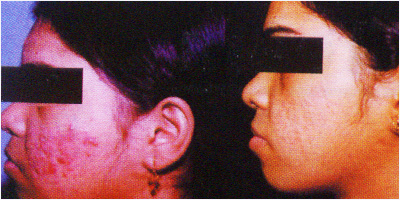
What can be done for acne scars?
It is best to prevent scars from occurring by treating acne properly. Howeveft if scarring has already occurred, Dr. Dutta may choose to treat with chemical peels, microdermabrasion, radiofrequency or carbon dioxide laser resurfacing or Intense Pulsed Light to reduce the scars.
How fast will my acne respond to treatment?
It takes 6-8 weeks to start seeing improvement, so do not get discouraged early and stop the treatment. If there is no improvement at all after 8 weeks, Dr. Dutta will probably make changes in your treatment plan.
My ointments work on the spots where I apply, but I keep getting new acne elsewhere. What should I do?
Topical acne medication should be used on all acne-prone areas e.g. forehead, cheeks, chin and nose. The goal is not only to get rid of existing lesions but also to prevent new ones. At BR Institute of Dermatology and Allied Diseases, Kolkata, we use Intense Pulsed Light. Our Dermatologist, Dr. Rathindra Nath Dutta, will carefully evaluate your condition and design a treatment plan specific for your acne.
BackVitiligo
What is vitiligo?
Vitiligo (rhymes with little-l-go) is often referred to as leucoderma by Indian patients. In this disease, white spots or patches appear on the skin. It is believed to be an autoimmune disease.
What is an autoimmune disease?
In an autoimmune disease, a person's immune system produces antibodies against his / her own organs / tissues. In vitiligo, antibodies attack and destroy specialized cells in the skin (melanocytes), which are responsible for producing the skin pigment (melanin).
What are the distribution patterns of vitiligo?
There may be just one or a few white patches on the body. This is called focal vitiligo. It may affect only one side of the body. This is termed segmental vitiligo. When there are many white patches on the body, the condition is referred to as generalized vitiligo. Sometimes the hair on the white patches also turns white. This is called leucotrichia. In rare cases vitiligo can affect eye colour as well as the pigment In the retina.
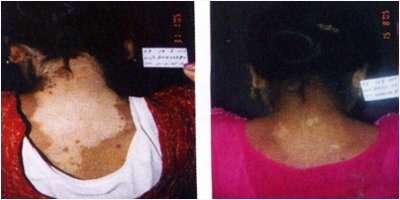
What are the treatment options for vitiligo?
Vitiligo is a difficult disease to treat. Traditional therapies include :-
Oral / local psoralens + UVA light (PUVA) Steroid creams.
Newer treatments include -
- Narrow-band UVB light
- Excimer lasers
- Pseudocatalase cream
- Topical and systemic immunomodulators
- Vitiligo surgery
How long does it take to see improvement?
You should treat for at least 6 months before deciding that the method is not working. It may take 2 years or more to see good results.
What is narrow-band UVB phototherapy?
Narrow-band UVB phototherapy is a relatively new technology for treating vitiligo. Dr. Dutta uses Narrow-band UVB equipment to treat vitiligo at BR Institute of Dermatology and Allied Diseases, Kolkata.
Can narrow band ultraviolet B be used to treat other skin diseases?
Apart from vitiligo, narrow band UVB is being used to treat psoriasis, atopic eczema, lichen planus, alopecia areata, acne, persistent itching, pityriasis lichenoides and many other not so common skin diseases. What are the advantages of narrow band UVB over PUVA (psorajen + UVA)? Oral psoralen cannot be given to children and pregnant ladies. It also needs to be withdrawn if there are troublesome side-effects like nausea and vertigo. If oral psoralen is given, patient needs sun-protection for the eyes for the next 24 hours. Narrow band UVB works well in most patients without psoralen. Therefore the problems linked to psoralen usage are not there with narrow band UVB. In addition exposure times are shorter and frequency (number of sessions per week) is also lower with narrow band UVB. NBUVB is toda; considered to be more effective in clearing the disease too.
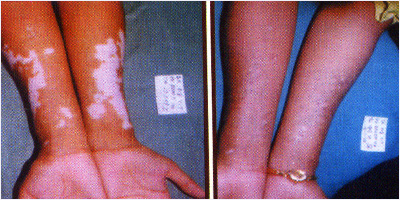
What are tacrolimus and calcipotriol?
Tacrolimus and calcipotriol are immunomodulators that have shown promising results in vitiligo.
What is pseudocatalase?
Pseudocatalase cream, when applied twice daily over vitiligo patches, reduces levels of hydrogen peroxide in the skin. Used in combination with Narrow-band UVB, it has shown good results in vitiligo.
What is L-phenylalanine?
L-phenylalanine is a promising drug for childhood vitiligo. The patient takes the drug orally and then expose the white patches to ultraviolet A light.
What is khellin?
Khellin is a substance chemically related to psoralen. It has been used topically and systemically with sunlight and UVA (KUVA).
BackCommon acquired Facial Pigmentation
1) Melasma
Melasma is a skin condition affecting Asians including indian people .Symptoms are brown patches appearing on the cheeks as well as other part of the face . Melasma is widely recognized as a systemic condition , often resulting from pregnancy , hormone replecement therapy, UV factors etc. The incidence is greater in women than men . Traetment protocol includes supression by the use of potent depigmenting agents often combined with procedures like (1) IPL (2) Microdermabrasion (3) Glyolic Acid Treatment etc.
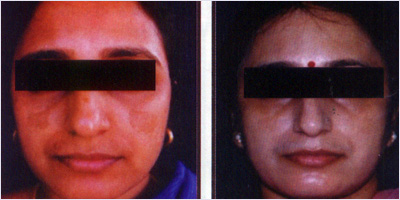
2) Hori's Neavus
An unusual pigmentary condition,Hori's Neavus equally affects oriental women in their 30 s to 50s . Symptoms are light brown to greyish spots over the cheeks and bridge of the nose .Genetic and hormonal factors likely influence the growth of Hori's Neavus.Since pigmentation is relatively deep within the skin, topical treatment usually does not work . Pigment laser usually gives the desired result in treating the condition.
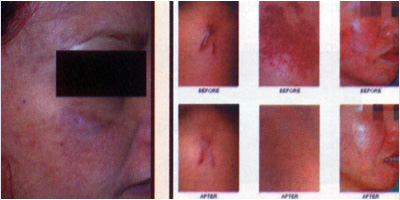
3) Freckles
Areas of skin such as nose and cheeks when exposed to the sun sometimes get affected and cause light brown tiny flat spots. Called freckles , they are present when young becoming prominent with aging.
Regular use of sun screens and skin lightening creams reduce and lighten freckles.If freckles still persist despite the foregoing measurse they can be safely removed by skin lightening treatment, chemical peels, intense pulse light(ipl) therapy etc depending on your skin type and condition.
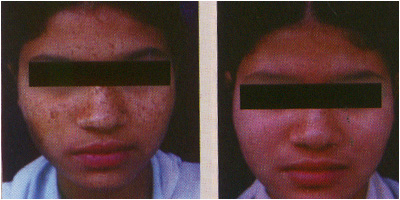
4) Solar Lentigines (Age spots)
Extrinsic skin ageing as a result of prolonged (regular/chronic) sun exposure result in formation of light brownish pigmentation on the face , arms legs, and other sun exposed areas of the skin. Age spots are usually noted in the age bracket of 30s to 40s becoming more prominent with aging. Since they are harmless and do not become cancerous they can be left alone or lightened with bleaching creams , skin lightening treatment, IPL etc.

Back
Psoriasis
What is psoriasis?
The term psoriasis means "to itch". However only 50% psoriasis patients have itching. Psoriasis is a chronic (long-lasting), non-contagious skin disease, usually presenting with red patches covered with silvery scales. Its incidence is about 2%. Approximately 10 - 30% of psoriasis sufferers also experience inflammation of the joints called psoriatic arthritis.
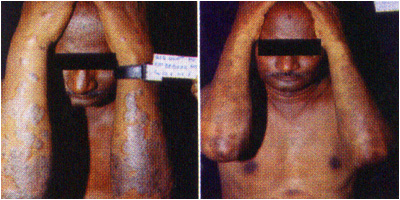
Are there different types of psoriasis?
Psoriasis may affect different parts of the body and also look different in different areas.
Discoid or plaque psoriasis - Silvery, scaly areas are seen usually on the elbows, knees, scalp and trunk.
Nail psoriasis - There is loosening, lifting, discoloration and thickening of the nails.
Scalp psoriasis - There may be dandruff-like scales or thick scabs op the scafp. These may be the first sign of psoriasis in the patient.
Guttate psoriasis - This usually occurs in children after a streptococcal sore throat. Small pink areas of scaling, resembling raindrops, are seen on the trunk.
Flexural or inverse psoriasis - This type of psoriasis appears as glazed red patches without scaling in the armpits and groins and under the breasts.
Napkin psoriasis - This appears as glazed red patches in the napkin area in babies.
Generalised pustular psoriasis - At first there is reddening of the skin all over the body. Then small pustules appear on the skin. Soon there are lakes of pus under the skin. The patient has high fever and a rapid pulse. He / she needs quick hospitalization, as the condition is life- threatening.
Generalised erythrodermic psoriasis - There is redness and scaling all over the body with accompanying fever and lymph-node enlargement. Like generalized pustular psoriasis, this condition is also life-threatening and the patient needs immediate hospitalisation.
Palmoplantar pustulosis - There are deep-seated pustules and dark red crusts on the palms and soles.
Psoriatic arthritis - The joints of the fingers, toes, spine and hips are affected.
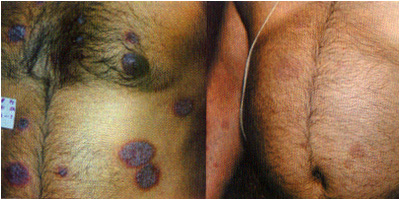
What is the cause of psoriasis?
Psoriasis is a skin disorder driven by the immune system, especially involving a type of white blood cell called a T cell. Normally, T cells help protect the body against infection and disease. In the case of psoriasis,T cells are put into action by mistake and become so active that they trigger other immune responses, which lead to inflammation and to rapid turnover of skin cells.
Some people carry genes, which make them more prone to develop psoriasis. Those who already have psoriasis in the family carry these genes on chromosome 6, others on chromosome 8.
What is the cause of psoriasis?
Psoriasis is a skin disorder driven by the immune system, especially involving a type of white blood cell called a T cell. Normally, T cells help protect the body against infection and disease. In the case of psoriasis,T cells are put into action by mistake and become so active that they trigger other immune responses, which lead to inflammation and to rapid turnover of skin cells.
Some people carry genes, which make them more prone to develop psoriasis. Those who already have psoriasis in the family carry these genes on chromosome 6, others on chromosome 8.
The following can also trigger off psoriasis
- Emotional stress
- Injury to the skin
- Streptococcal throat infection
Drugs e.g. anti-malarials like chloroquine and mefloquine, blood pressure lowering agents like beta-blockers, calcium channel blockers and captopril, painkillers like aspirin, cholesterol lowering agents like gemfibrozil, psychiatric medicines like lithium, systemic steroids and alcohol intake.
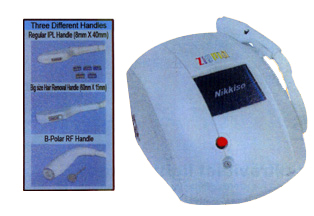
How effective is ultraviolet light therapy?
Ultraviolet light or UV light is used for more extensive skin involvement. This form of treatment is very successful and safer to use than many of the oral medications.
What is narrow-band UVB phototherapy?
Narrow-band UVB phototherapy is a relatively new technology for treating psoriasis.
Can narrow band ultraviolet B be used to treat other skin diseases?
Apart from psoriasis, narrow band UVB is being used to treat vitiligo, atopic eczema, lichen planus, alopecia areata, persistent itching, pityriasis lichenoides and many other not so common skin diseases.
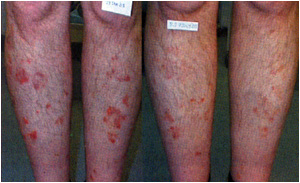
What are the advantages of narrow band UVB over PUVA (psoralen + UVA)?
Oral psoralen cannot be given to children and pregnant ladies. It also needs to be withdrawn if there are troublesome side-effects like nausea and vertigo. If oral psoralen is given, the patient needs sun-protection for the eyes for the next 24 hours. Narrow band UVB works well in most patients without psoralen. Therefore the problems linked to psoralen usage are not there with narrow band UVB. In addition exposure times are shorter and frequency (number of sessions per week) is also lower with narrow band UVB. NBUVB is today considered to be more effective in clearing the disease too.
BackHand Eczema
What is Eczema?
Inflemmatory reaction to several factors, including irritating or allergic substance.

Cause of Eczema?
1) Allergy to a specific substance (e.g. perfume, chemicals , cement etc)
2) Constitutional factors- inherited sensitive skin .
3) Irritation from excessive wet work , acid , solvents , detergents etc.
4) A combination of all above factors.
Your doctor will help you detect any allergy and / or irritant causing or worsening your hand eczema and prescribe wet dressing., medicated creams , oinments or tablets to supress the eczema.You can help your doctor by telling him the substance you come into contact with at home of work and in your hobby . Tell him the medication or skin care porducts you have applied.Protect your skin from irritant.
When engaged in wet works like washing clothes and dishes , wear water tight gloves and do not wear gloves more than 30 minutse at one time.Keep interior of the gloves dry.

Avoid using strong , medicated soap or detergent powder to wash your hand. Instead use mild soap.Never use solvent to clean your hands.
Avoid washing hands frequently and avoid any allergen once it is detected.
BackHair
Everyone loses hair. It is normal to lose about 50-100 hairs every day. If you see bald patches or lots of thinning, you may be experiencing hair loss. There are many causes of hair loss. Women may notice hair loss after giving birth. People under a lot of stress can see noticeable hair loss. Some diseases and medical treatments can cause hair loss. Even how you style and care for your hair can cause hair loss. The most common cause of hair loss is a medical condition called hereditary hair loss.
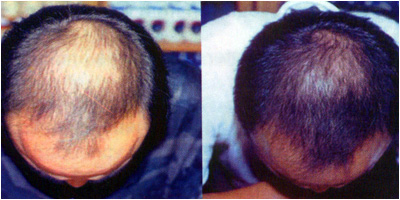
Other names for this type of hair loss are:
1) Male-pattern baldness
2) Female-pattern baldness
3) Androgenetic alopecia
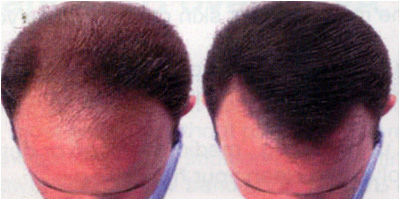
Luckily, most causes of hair loss can be stopped or treated. Anyone troubled by hair loss should see a dermatologist.
BackNail
Common disorders include:
1) Infection by bacteria, fungus, yeast virus
2) Infiamation of bed nails
3) Nail disorder due to skin diseases
4) Nail pigmentation
A number of diseases may cause nail disorder. Fungal nail infection is the most common nail infection .The nail plate may become brittle or completely destroyed
Nail biting, scratching, nail folds, bad manicuring or industrial accident can damage nails. Damaged nails may appear ridged, cracked or broken. Melanoma, a form of skin cancer may cause pigmented band.

Laboratory microscopic examination of nail clippings may confirm fungal nail* infection. Treatment may include oral antifungal tablets or antifungal lotion and may last from 2 to 12 months, depending on the type of infection and oral antifungal medicine prescribed.
The infected nails may take a few months to return to normal after the treatment has been stopped.
Viral wart and infection of the nail bed and fold is another common disorder. Cryotherapy or Laser surgery may be used to treat the condition.
Habit biting and constantly wet work can cause injury to proximal nail fold. Occupation of people like house-wives, canteen workers, fishermen, cooks, etc. whose hands are exposed to water most of the time, are more prone to develop this symptom.
Treatment of paronchia includes draining the pus in the infected nail fold and oral antibiotics. Wearing of impervious gloves during wet work helps prevent the condition.
BackAbout Intense Pulsed Light, Hair Removal & Photorejuvenation
What are the commonly used methods of hair removal today?
Hair removal methods can be classified as:-
1) Temporary Methods Of Hair Removal
2) Long-term Methods Of Hair Removal
1) Temporary Methods of Hair Removal include
Shaving - Contrary to popular belief, shaving does not make the hair coarser or grow faster. However most ladies with hair growth shun it as a masculine act, although shaving is quick and cheap.
Plucking / Tweezing / Threading / Waxing - These methods are also dtiick and cheap but sometimes lead to the development of black marks, boils or allergic rashes. Additionally, the hair has to be grown to a certain length before the procedure can be performed.
Chemical depilatories - These are also simple to use but may produce a primary irritant or allergic dermatitis. Chemical depilatories are salts of thioglycolic acid, which were patented in the 1930s for dehairing cattle hide.
Vaniqa cream - This is available in the US only on prescription and contains Eflornithine HC113.9%. It does not remove hair but slows down its rate of growth.

2) Long-term Methods of Hair Removal include
Electrolysis - This may be performed using a DC current (galvanic electrolysis), an AC current (thermolysis) or a mixture of AC and DC current (blend). Electrolysis is an effective method of long-term hair removal. However, it is painful and time-consuming and may lead to light or dark coloured scars.
Lasers - Laser machines emit light of a fixed wavelength. Melanin, the pigment present in dark hair, possesses the property to absorb light energy within a certain wavelength range. The hair then conducts this energy into the depth of the follicle. The cells in the follicle responsible for hair growth get heated up and eventually destroyed. The skin is not damaged. This is called selective photothermolysis.
Intense Ppulsed Light - Unlike lasers, this system emits a broad light pulse spectrum (570 -1200 nm). The wavelength is adjusted using cut-off filters, Shorter wavelengths are selected for light hair, light skin and superficial follicles. Longer wavelengths are selected for dark hair, dark skin and deep follicles. The treatment can thus be better customized than lasers to the patient's skin and hair type.
Which is the system used for hair removal at Skin City Clinic unit of BR Institute of Dermatology and Allied Diseases, Kolkata?
Doctors of Skin City use an Intense Pulsed Light (IPL) device from world leaders for permanent hair removal.

What else can Intense Pulsed Light (IPL) treat?
IPL technology improves the appearance of photoaged skin, removes age spots (sun-induced freckles), most benign brown pigments, and redness caused by broken capillaries through a process called photorejuvenation for face and body. IPL skin treatments using photorejuvenation help restore a more youthful appearance without any downtime. Intense Pulsed Light treatment also works on all grades of acne, by destroying the bacteria P. acnes.
Can pigmented hairy lesions be treated with IPL?
Yes, it is possible to treat this type of lesion with IPL, due to the versatility of filters. IPL with longer filters can penetrate deeper than IPL with short filters. Thus, a shorter filter may be used to treat the superficial (epidermal) pigmented lesion and take care of the excessive pigment, whereas a longer filter may be applied for hair removal.
BackChemical Peels
How are chemical peels graded?
Chemical peels may be graded, based on the depth of the procedure, as superficial, medium or deep. Superficial chemical peels target part or all of the epidermis. Sometimes, a peel, which targets only the stratum corneum (dead cell layer of the epidermis), is called a very superficial peel.
Medium-depth chemical peels target the epidermis and part or all of the papillary dermis. Deep peels tar the epidermis, papillary dermis and superficial reticular dermis. Asian skin is usually treated with superfic peels and only sometimes with medium depth peels.
What chemicals do peels contain?
Chemical peels may contain glycolic acid, also called alpha-hydroxy acids(AHAs), salicylic acid, also cat beta-hydroxy acids (BHAs), trichloracetic acid (TCA), lactic acid, pyruvic acid, resorcinol, phenol or combinations of the above.
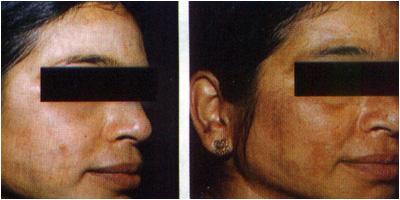
Which are the peels used at Skin City unit of BR Institute of Dermatology and Allied Diseases?
Doctors of Skin City usually rely on glycolic acid peels reputed to be the best in the world. They also use TCA from various sources, including Easy TCA from Skin Tech, Spain. Easy TCA contains TCA, AHA an antioxidants.
How does glycolic acid improve the skin?
Glycolic acid thins out the dead cell layer (stratum corneum). This makes the skin look better. Glycolic ac thickens the deeper layers of the epidermis by stimulating cell multiplication. As skin aging Is accompany by thinning of the deeper layers of the epidermis, this effect makes the skin more youthful. A superficial glycolic acid peel, without causing any deep injury, stimulates production of collagen and elastin in the dermis. This results in tightening of the skin and wrinkle improvement.
How long does It take to get a chemical peel done?
It may take 15-30 minutes to undergo a chemical peel.

Is it a painful affair?
A chemical peel is not painful, but there may be a mild itching or burning sensation for a few minutes
Is there a lot of visible peeling? Do I need to take leave from work after a peel?
With Neostrata superficial glycolic acid peels, peeling occours gently and invisibly. There is no need to miss out on work, studying and socialising after a superficial peel.
How often do I need to get a chemical peel done?
A chemical peel is usually performed every 4 weeks. However for stubborn problems, it can be repeted every 2 weeks.
What is a spot peel?
A spot peel is performed only on the lesion(s) and not the entire region. Spot peels are often used to treat freckles, acne and scars.
At BR Institute of Dermatology and Allied Diseases, Kolkata, we use glycolic acid as well as TCA and phenol. Our Dermatologist, Dr. Rathindra Nath Dutta, will evaluate your condition and design a treatment plan specific for your kind of damaged skin.
BackWrinkle Treatment With Botox
What are dynamic wrinkles?
When we frown, smile or laugh, we contract muscles on our face. These muscles are situated below our skin and their contraction causes our skin to develop folds, often referred to as "worry lines", "crow's fee or simply forehead lines. These are called dynamic wrinkles. With time, these lines become deeper and permanent.
Can dynamic wrinkles be treated?
A simple treatment with Botox Cosmetic injections can dramatically soften these facial expression lines, leaving you looking younger and more beautiful. This treatment is without surgery, scars and recovery time
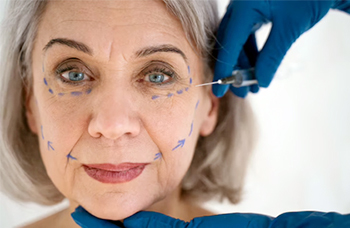
How does Botox work?
Facial expressions occur when the brain sends a signal via nerves to muscles on the face. Botox blocks the transmission of impulses from the nerve to the muscle. This relaxes the muscle, making the overlyint skin smooth and unwrinkled. Botox works only on the injected muscles.
Is Botox injection painful?
As a very small quantity of material is injected using a very fine needle, Botox administration is virtually painless.
Where is Botox Cosmetic used?
At Indian BR Institute of Dermatology and Allied Diseases,Dr. Dutta uses Botox to treat frown lines betw< the eyebrows, horizontal forehead lines, crow's feet or smile lines around the eyes, lines around the mouth (smoker's lips) and neck lines. Dr. Dutta also uses Botox to achieve brow lifts and reduce sweating from palms and armpits.
Is Botox safe?
Botox enjoys an excellent safety profile, as it has been in use for more than a decade in over 60 countrk without a single reported permanent side-effect. Botox has not been tested and therefore should not be used on pregnant or breast-feeding ladies. After a Botox injection, there may be temporary local bruising or a temporary weakness of nearby muscles. These disappear fairly quickly.
BackDermal Fillers
What is Dermal Filler?
Restylane is a dermal filler, used as an injection to treat wrinkles, scars and deep grooves below the nose and also to plump up the lips.
What does Dermal Filler contain?
Restylane is made up of hyaluronic acid. Hyaluronic acid is a substance, which is already present in the deeper layers of the skin. When injected, Restylane draws water and swells up, thereby filling up the defect.

How is Dermal Filler different from other hyaluronic acid based products?
Hyalform (Biomatrix, Ridgefield, NJ) and ial-System (Fidia, Abano Terme, Italy) are also hyaluronic acid based products, but they are obtained from rooster combs. As Restylane is from non-animal source, there is very little risk of getting an animal based disease or allergic reaction.
How long does the effect of Dermal Fillers last?
The effect lasts for 6 months or longer.
How is Dermal Filler different from Botox?
Botox is used to treat "wrinkles in motion". Restylane is used to treat "wrinkles at rest".
Can you tell us about other dermal fillers?
Dermal fillers can be categorized as -
- Heterografts
- Allografts
- Autografts
- Synthetics

Heterografts are products taken from a non-human species for use in humans e.g. bovine collagen suspensions (Zyderm I and II, Zyplast and Resoplast), polymethylmethacrylate microspheres suspended in bovine collagen solution (Artecoll), animal hyaluronic acid from rooster combs (Hylaform and lal-System), non-animal stabilized hyaluronic acid NASHA (Restylane Touch, Restylane, Restylane Vital, Restylane SubQ and Perlane) and porcine collagen (Permacol and Fibrils).
Allografts are products from dead / alive human donors (Alloderm, Cymetra, Dermalogen). Autografts are products transferred from one part of the body to another, in the same person (autologous fat, autologous collagen, Autologen and Isolagen). To get Autologen and Isolagen, a piece of skin is removed from the patient and sent to the laboratory. The collagen fibres are processed (Autologen) or cultured (Isolagen) and then sent back for implantation.

Synthetic materials like polytetrafluoroethylene (Gore-tex), silicone, silicium biopolymer (Biopolymere III) and methylsiloxane rubber particles suspended in plasdone hydrogel (Bioplastique) are also being used as dermal fillers. Recently poly-L-lactic acid (Sculptra in USA and New-Fill in Europe) and calcium hydroxyapatite (Radiance) have been used for large volume filling.
BackRadiofrequency Surgery
What is radiofrequency surgery?
Radiofrequency surgery is the use of a very high frequency radio wave (1.5 - 4.5 MHz) to perform skin, plastic and eyelid surgery. The advantage over conventional scalpel surgery is reduced tissue damage.
How does radiofrequency differ from electrocautery?
In electrocautery the electrode becomes hot, leading to more lateral tissue damage. With radiofrequency, the electrode remains cold, resulting in very little lateral tissue damage. With electrocautery the tissue is charred black. With radiofrequency the treated area remains of normal colour.
What are the advantages of radiofrequency?
The advantages of radiofrequency are ease of ablation, speed and better cosmetic results.
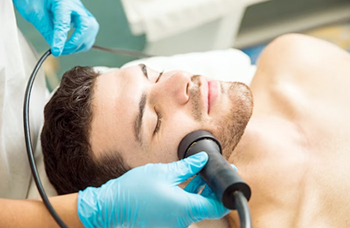
What are the problems that can be treated with radiofrequency?
Moles, warts, skin tags, corns, acne scars and keloids are some common problems that are treated at BR Institute of Dermatology and Allied Diseases with radiofrequency with excellent results. Rhinophyma, telangiectasias, granuloma pyogenicum, keratoacanthoma and squamous and basal cell skin cancers are some less common conditions, that are also being treated at Skin City Clinic with radiofrequency.
BackIntralesional Injections
What are keloids and hypertrophic scars?
Keloids and hypertrophic scars result from excessive fibrous repair tissue formation, after skin injury a hypertrophic scar remains confined to the site of the injury. A keloid grows beyond the site of the injury, often with claw-like extensions.
How are hypertrophic scars and keloids treated at BR Institute of Dermatology and Allied Diseases, Kolkata?
Hypertrophic scars and keloids are treated at BR Institute of Dermatology and Allied Diseases, Kolkata with intralesional injections, Intense Pulsed Light (IPL), silicon gel sheets and pressure garments. Refractory keloids are excised using carbon dioxide laser.
What is alopecia areata?
Alopecia areata is a localized loss of hair in round patches without any vjsible change in the skin. Loss of all scalp hair and eyebrows is called alopecia totalis. Complete loss of all body hair is called alopecia universalis.
What is the treatment of alopecia areata?
Alopecia areata may be treated with topical and systemic steroids, intralesional triamcinolone, DNCB application, phenol chemical cautery, oral cyclosporine and phototherapy.
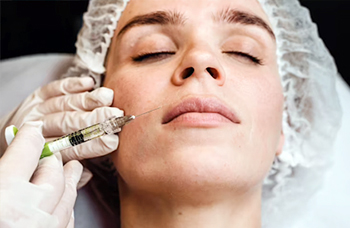
What is cystic acne?
Cystic acne is a severe variety of acne with formation of bumps filled with semisolid material.
What is the treatment of cystic acne?
Cystic acne is first treated with oral isotretinoin. If it does not respond or if oral isotretinoin cannot be given,then intralesional injections of triamcinolone should be tried.
What is discoid lupus erythematosus?
In discoid lupus erythematosus, the patient develops bright red plaques with adherent scales. The lesions are usually present on the scalp, face and forearms. Scalp lesions may cause permanent hair loss.
What is the treatment of discoid lupus erythematosus?
Discoid lupus erythematosus may be treated with sunscreens, potent topical steroids, intralesional injections of triamcinolone, oral hydroxychloroquine and oral etretinate.
What is lichen planus?
Lichen planus is an inflammatory dermatosis characterized by itchy, polygonal, pink to violet, flat-topped, shiny papules (elevated solid lesions) on the skin. Lichen planus may also be present in the mouth, where it appears as a white netlike discolouration.
How is lichen planus treated?
Lichen planus may be treated with topical steroids, intralesional injections of triamcinolone, cyclosporine mouthwash and tablets, systemic steroids, oral acitretin or etretinate, phototherapy, mycophenolate mofetil,enoxaparin and azathioprine.
What is lichen simplex chronicus?
Lichen simplex chronicus is a reaction pattern of the skin to chronic friction from rubbing or scratching.
How is lichen simplex chronicus treated?
Cessation of the itch-scratch-itch cycle is imperative. After that the skin lesions may be treated with topical steroids under occlusion, intralesional injections of triamcinolone, coal tar paste or Unna boot.
What is nail psoriasis?
25% of patients suffering from psoriasis exhibit nail changes. These include pitting, subungual hyperkeratosis, onycholysis (separation of the distal nail plate) and oil spots (brownish-yellow discolouration).
How is nail psoriasis treated?
Nail psoriasis is treated with intralesional injections of triamcinolone acetonide into the nail fold. Normal treatment methods for psoriasis may also help.
BackMicrodermabrasion
What is microdermabrasion?
Medical grade aluminum oxide micro-crystals are propelled at a high speed across the skin and then suctioned away and discarded. This creates a polishing effect and leaves the skin feeling remarkably smooth. Since microdermabrasion removes only the topmost layer of dead skin cells, it does not involve any pain or healing time.
Why is microdermabrasion called a "lunch-time peel"?
Microdermabrasion takes 15-20 minutes to perform. It does not require any anaesthesia or bandaging and it does not leave any telltale marks on the skin. As a person can leave office during the lunch-break, get a microdermabrasion done and return to office before the break is over, it is often termed a "lunch-time peel".
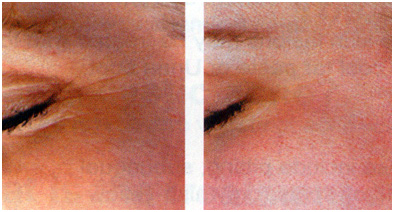
How does microdermabrasion work?
The stimulated blood flow to the surface increases oxygenation, causing an enhancement of cell renewal and collagen re-growth. The gentle massaging action of the microdermabrasion treatment creates a flushing and cleansing effect below the skin surface, resulting in a vibrant healthy appearance and complexion
BackCarbon Dioxide Laser Surgery
What does laser mean?
The word laser is an acronym that stands for light amplification by the stimulated emission of radiation.
What is special about laser light?
Laser light has several features that differentiate it from conventional light.
1) Coherence - The emitted photons are spatially and temporally in phase with one another.
2) Mono Chromaticity - The emitted energy is of a single wavelength.
3) Collimation - The waves travel parallel to one another.
4) High intensity - The number of photons emitted by a laser per unit area is much greater than that emitted by any other source of electromagnetic radiation.
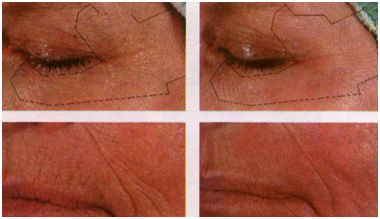
Due to these special properties, lasers have enabled Dermatologists to manage many conditions for which no effective treatment previously existed. Other conditions can be treated better with lasers than older methods.
What is carbon dioxide laser?
The carbon dioxide laser emits an invisible beam of light of 10,600 nm wavelength. The water in the tissues precisely absorbs this energy and is instantly converted from liquid to gas, creating a plume of steam and smoke.
What are the different modes in which the carbon dioxide laser can be operated?
The carbon dioxide laser can be used in the focused mode as a shaping instrument. In the defocused mode it is used to precisely evaporate tissue.
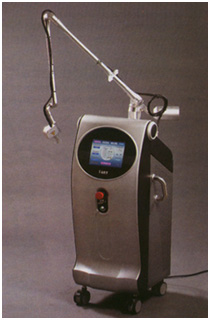
What are the indications for excision surgery with the carbon dioxide laser?
The carbon dioxide laser is used in the excision mode in the following conditions - anticoagulation, vascular tumor, vascular anatomic location, keloids, rhinophyma, malignant melanoma, squamous cell carcinoma, cardiac pacemaker, cardiac monitoring, perforation of cranial bone, blepharoplasty and nail surgery.
What are the conditions treated by the carbon dioxide lase in vaporization mode?
The carbon dioxide laser is used in the vaporizational mode to treat the following conditions - acne scars, actinic cheilitis, adenoma sebaceum, balanitis xerotica obliterans, basal cell carcinoma, chondrodermatitis nodularis helicis, digital mucous cyst, epidermal nevus, erythroplasia of Querat, granuloma faciale, lentigines, lichen sclerosus et atrophicus, lymphangioma circumscriptum, nail matricectomy, neurofibroma, nodular amyloidosis, ochronosis, porokeratosis, rhinophyma, steatocystoma, tattoo, trichoepithelioma, tricholemmoma, vascular lesions e.g. angiokeratoma, cherry angioma, pyogenic granuloma, telangiectasia and venous lake, vellus hair cyst, warts, xanthelasma and Zoon's balanitis.
BackWhole Body Phototherapy Chamber
Whole body phototherapy chamber In-built Multi sensor dosimeter with Dynamic Range Angular Sensitive (DRAS) Technology. Ultraviolet (UV) phototherapy equipment is used to treat patients with complicated psoriasis, recalcitrant atopic dermatitis, and other light-responsive skin disorders such as Vitiligo, Pityriasis lichenoides chronica and lymphoma (mycosis fungoides).

Back
Hair Analysis Apparatus
Imported, "the state of the art technology" hair analysis apparatus features Total care program to analyze and prescribe the scalp and hair condition. Built-in prescription system. Print-out of the customers' analysis results.

Easy to make customers' Data base using the customer registration program. Give suitable care solutions after checking customers' scalp and hair condition. Give suitable care solutions after observing the damaged hair and dandruff. Possible to catch the symptom of loss of hair through hair density measurement. Built-in prescription system. Print-out of the customers analysis results.

Back
Skin Analysis Apparatus
"The state of the art technology" skin analysis is imported instrument. Moisture, Over Keratin, T-Zone oil, U-Zone oil, freckle and wrinkles measurement are possible. Measurements can be done very fast. The analysis result is reliable and diagnosis is convenient. Can see skin section on 3D solid screen. Can compare skin image easily because there are 2 division function, Built-in prescription system, Print-out of the customer's analysis results, and history is possible.

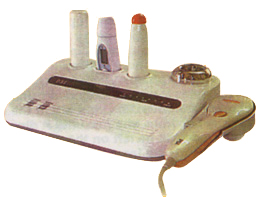
Back
Long Plused Nd Yag Laser for Hair Removal
1064 mm Long PI used Nd Yag Laser For Laser For Hair Removal. This is the newest generation solid state laser system with long pulse duration, high efficiency and strong output energy. Energy of laser is selectively absorbed by melanin of hair follicles to reach a very high level. Targeted hair structures are destroyed and regrowth is inhabited. This Laser can treat any area of the body for hair removal, such as hairline, hair around lip area, beard, armpit hair, hair on arms, legs, breast and bikini area.
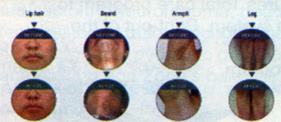
After absorbing the energy of laser, the hair follicles and relevant structures are damaged so as to break the survival environment of the hair.
The destroyed hair follicles lose nutritional supply and shrink; atrophied hair structure is inhibited and will not grow again.
BackSwitched ND-YAG Laser
Switched Nd-Yag Laser 1000 mJ Removal of Tattoo, Birthmark, Nevus, Pigment Aggregate with Aiming Beam Treatment theory. The model of gem Q-switch has been adopted in the machine. The pigmentation in the lesion tissue could be effectively broken up into pieces and removed by taking advantage of the high energy immediately irradiated by Laser, which is the explosion principle. One part of the pigment (inside the chromphore) will split into tiny granules that can be engulfed by phagocytes of the body. After the digestion of phagocytes it can be excluded from the lymphatic system of the body. The pigment of the injured tissues gradually becomes shallow until it disappears, while no injured trace will be left on the peripheral normal tissues, for they will not absorb the laser of the fixed wavelength.
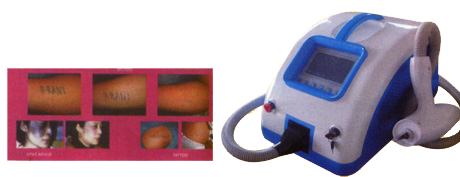
Back
(Multi Platform) IPL, IPL+RF & RF Instrument
(MULTI Platform) IPL, IPL+RF & RF with inbuilt cooling a board band light source which can be used to treat certain pigmentation such as freckles and melasma, fine red vessels and facial redness skin lesions and inprove skin texture. Hair Removal; skin rejuvenation Pigmented & Vascular lesion, Acne Treatment,

Treatment Hand Piece, 3 Types
1) Treatment handle combines IPL with RF which can work together and seperately.
2) Big spot size handle which is specially used for hair removal,
3) Powerful cooling system consists of air cooling, water cooling and semiconductor cooling, whichensures long working time.
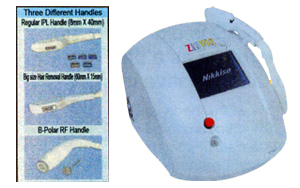
Back
Biolight
Bio-Light is a portable, advanced, harmless LED equipment where lights from it can penetrate skin and tissues as deeply as one inch thereby improving blood circulation, increasing cell metabolism, Blue -Acne scars, Pigmentation, Wrinkels, Dry skin, Bunion & Red spot. Red - Osteoarthritis, Tendinitis, Fibromyalgia, Sports injuries & Back Pain. Yellow - Rosaceae, Wound cuts, Burns, Anti-Brusing & Myofacial pain.

Back
Dermaroller
It is called the por man's laser. It is a small machine with multiple small pins attachedto a roller with a handle. It is used mainly in patients with sacrs caused by acne or any other cause. It is also used with great success for facial rejuvenation.
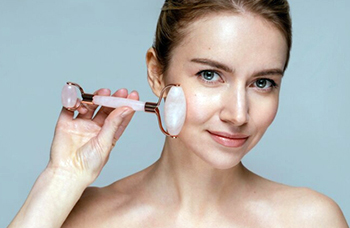
Back